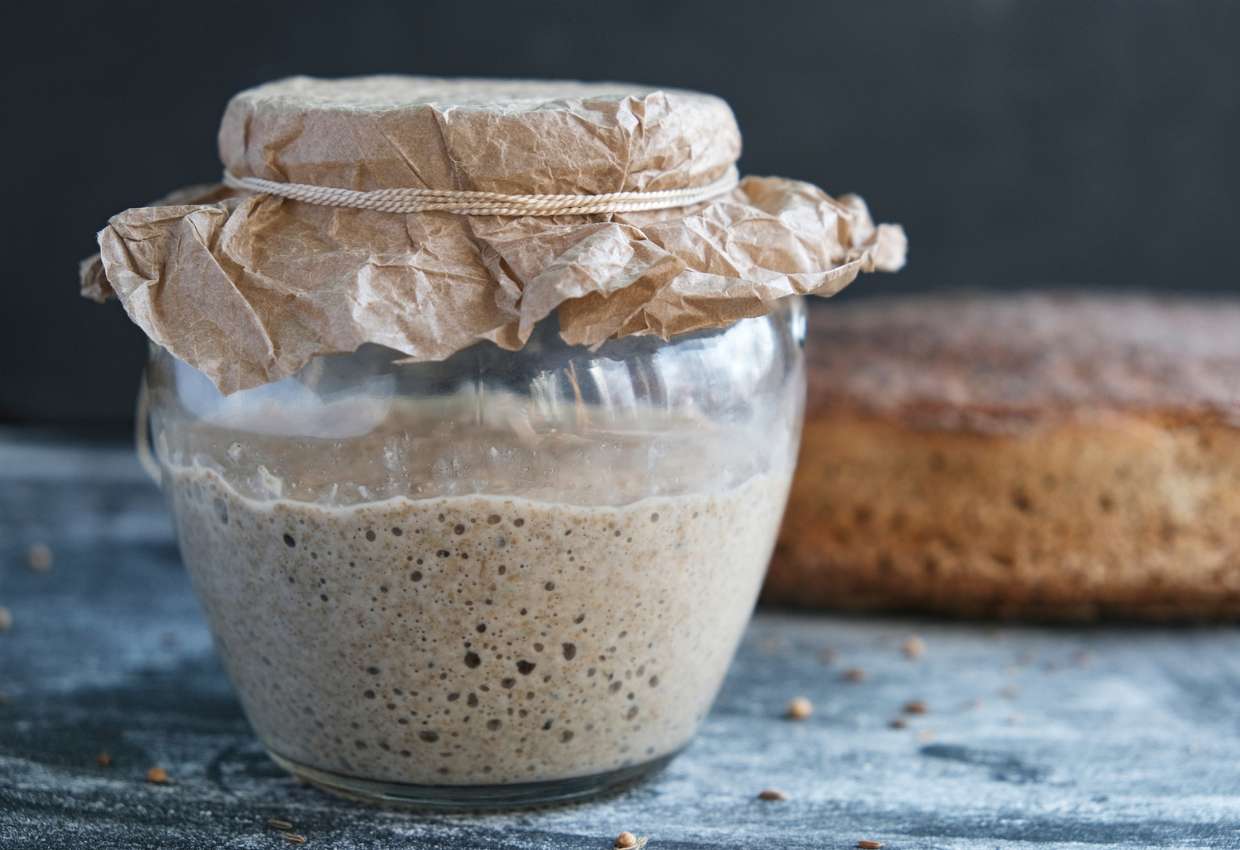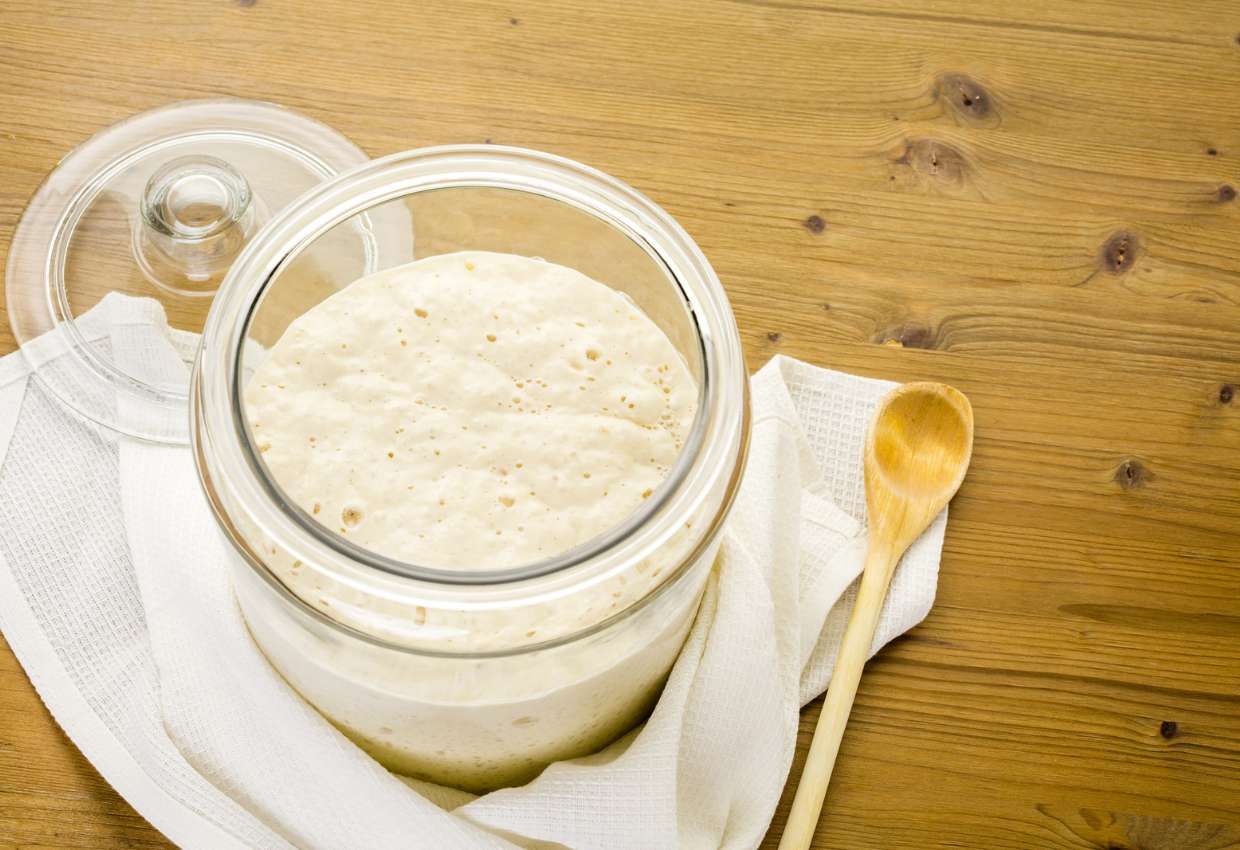Do you love baking with sourdough but hate tossing out the discard? Good news — use your excess sourdough to bake delicious new sourdough discard recipes, and reduce kitchen waste.

Sourdough discard, often overlooked, is a versatile ingredient in baking. Whether you’re a novice or an experienced baker, use these sourdough discard tips to enhance your baking.
Demystifying sourdough discard
Sourdough is a fermented mixture of water and flour that produces natural yeast. Recipes made with sourdough rise naturally. Using sourdough discard in your weekly meal planning minimizes kitchen waste and enriches baked goods with an unusually tangy flavor.
The sourdough starter is the original fermented amount of water and flour, and baking with sourdough requires feeding the starter regularly with additional flour and water. However, it grows if you don’t remove some of the starter each time you feed it. So if you don’t bake regularly each time you remove some, you will have an excess of starter.
Sourdough discard refers to the portion of sourdough starter removed before feeding the sourdough, a fermented blend of flour, water, and natural yeasts.
7 sourdough discard secrets

This flavorful fermented mixture adds depth and tang to various recipes. Far from being just waste, sourdough discard offers many possibilities for creating new sourdough discard recipes. These seven baking tips teach you to make the most of your sourdough discard.
Room temperature discard
For best baking results, use sourdough discard at room temperature. Cold discard straight from the fridge may slow the fermentation process and negatively impact the rise of your baked goods. Allowing the discard to come to room temperature lets it blend more seamlessly with other ingredients, helping to create a consistent texture and flavor in your bakes.
Liquid consistency with whole wheat flour
When baking with whole wheat flour in your recipes, consider the consistency of your sourdough discard. You’ll need to use a more liquid sourdough discard. Whole wheat flour absorbs more moisture, and the thinner discard helps maintain moisture in your dough and helps to avoid a dry finished product.
Filled with appetizers, salads, sides, mains and desserts, Food Drink Life's cookbook will become your favorite!
- Easy and delicious recipes from a variety of top chefs and recipe developers.
- Bright, colorful pictures on every page.
- Printer-friendly recipes that you can download instantly to your device.
- Printable shopping list and a kitchen conversion sheet.
Tangy flavor profile
Sourdough discard gives baking a distinct tangy flavor that is more pronounced than regular sourdough starters. This characteristic sourness adds a unique depth to baked goods, making them stand out with a gourmet twist. Remember to pair your sourdough recipes with complementary flavors, such as garlic, rosemary or thyme.
“I love making sourdough bread, but to keep my starter fed means that I always have plenty of discard. I keep that and use it in many other recipes where it adds a fabulous tang that makes them even more delicious. I love to use it in everything from chocolate chip cookies to
— Michelle Price, Honest and Trulypizza dough to brownies and even more. Don’t toss your discard!”
Substituting discard for sourdough starter
Substitute sourdough discard for a regular sourdough starter in many recipes. When doing so, keep a close eye on the hydration level of your discard and adjust the recipe’s liquid content accordingly. This substitution reduces waste and adds a layer of flavor complexity to your bakes.
Sourdough discard in regular recipes
Don’t limit your sourdough discard to just bread. It’s a versatile addition to many recipes, from sourdough discard biscuits, pancakes and waffles to crackers and
Storing sourdough discard
When removing the discard from the original starter, you may not want to bake with it immediately. Instead of throwing it out, store it in an airtight container in the fridge for up to a week. You may also freeze your discard in small amounts for convenience in future baking.
Proper storage ensures your discard remains fresh and safe to use. If you don’t own a freezer, consider dehydrating the sourdough starter. Doing so transforms the sourdough discard into a food with a long shelf life. Simply add water to rehydrate it when you want to bake.
Signs of over-aged sourdough discard
Learn the signs that sourdough discard has become too old to use. A pink or orange tint, a strong and unpleasant smell or any visible mold is a sure sign it’s time to discard it. Using over-aged discard will negatively impact the flavor, quality and safety of your sourdough discard baked goods.
Sourdough discard baking techniques

Consider baking with sourdough discard more of an art than a precise science. Feel free to experiment with using it in your favorite recipes.
Use sourdough discard to enhance the texture of baked goods as well as the flavor. For example, fold in the discard gently when making cakes or muffins to produce softer textures and to maintain airiness. For a crispier texture, like in crackers or crusts, a thinner discard yields a delightful crunch.
Baking with sourdough discard may require adjusting your baking times. Adding sourdough discard can change the moisture content in your dough or batter, so keep a close eye on your baking, checking for doneness a few minutes earlier or later than usual.
The unique tangy taste of sourdough discards pairs well with many different dishes and meals. Bake it into breads and rolls to serve alongside your favorite soups or stews.
Add sourdough discard crackers to your holiday charcuterie board. Or bake a batch of sourdough discard muffins for a cozy winter breakfast.
Experiment with different pairings like herbs, spices or sweeteners. Eventually, you’ll discover your perfect sourdough discard flavor combination.
Baking with sourdough discard takes patience and practice. Use your sourdough discard in current recipes, or look for new ones. Remember that sourdough discard is more than a byproduct of sourdough starter. It can become a signature ingredient in your kitchen.
Sarita Harbour is a homeschooling, homesteading mom and a long-time business and finance writer. She created An Off Grid Life to help people become more self-reliant. Sarita and her family live off the grid in Canada’s Northwest Territories.
